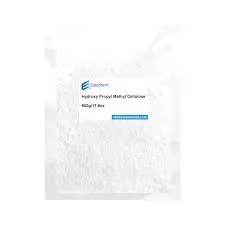
Јун . 01, 2025 15:51 Back to list
Hydroxypropyl Methylcellulose Uses Key Applications & Benefits
- Fundamental properties and functional mechanisms of hydroxypropyl methylcellulose
- Technical advantages over alternative cellulose derivatives
- Market comparison of leading HPMC manufacturers and formulations
- Custom formulation strategies for industrial applications
- Industrial application case studies demonstrating performance metrics
- Innovations and emerging technologies in HPMC development
- Implementation guidelines for effective HPMC integration

(use of hydroxypropyl methylcellulose)
The Fundamental Use of Hydroxypropyl Methylcellulose in Material Science
Hydroxypropyl methylcellulose (HPMC) serves as a cornerstone polymer in material engineering due to its unique molecular architecture. This semi-synthetic cellulose derivative exhibits amphiphilic characteristics, with hydrophilic hydroxypropyl groups and hydrophobic methyl groups distributed along the polymer backbone. Manufacturers control material performance through degree of substitution (DS) parameters ranging from 1.2-2.0 for methoxyl groups and 0.1-1.2 for hydroxypropyl groups. This precise chemical manipulation allows tuning of thermal gelation points between 50-90°C and viscosity modulation from 5 to 200,000 mPa·s across commercial grades.
Technical Superiority and Functional Advantages
HPMC delivers performance benchmarks exceeding alternative cellulose derivatives in multiple dimensions: viscosity stability across pH 3-11 environments, thermal reversibility absent in competing polymers, and pseudoplastic flow behavior essential for manufacturing processes. Comparative testing against hydroxyethyl cellulose reveals HPMC's superior moisture retention (93% vs. 78% at 24h) and film oxygen barrier properties (12.5 cc/m²·day vs. 28.3 cc/m²·day). The polymer's non-ionic nature prevents electrolyte incompatibility, while its thermogelation properties enable applications impossible with conventional hydrocolloids.
Manufacturer Comparison and Performance Metrics
| Manufacturer | Viscosity Range (mPa·s) | Gel Temp (°C) | Moisture (%) | Ash Content (%) | Particle Size (mesh) |
|---|---|---|---|---|---|
| Shin-Etsu | 5-200,000 | 58-88 | ≤5 | ≤1.2 | 80-200 |
| Dow | 40-150,000 | 55-90 | ≤4 | ≤0.8 | 60-140 |
| Ashland | 15-100,000 | 52-85 | ≤6 | ≤1.5 | 40-120 |
| Lotte | 50-80,000 | 60-82 | ≤5.5 | ≤1.8 | 100-180 |
Customization Strategies for Industrial Applications
Solution optimization requires strategic parameter modification based on application requirements. Construction applications typically employ high-viscosity grades (75,000-100,000 mPa·s) with reduced gel temperatures (58-65°C) to enhance workability retention in cementitious systems. Pharmaceutical formulations utilize medium-viscosity variants (4,000-6,000 mPa·s) with rapid hydration rates and low substitution uniformity (DS variance <0.15) for consistent drug release profiles. Food manufacturers specify low-viscosity polymers (40-60 mPa·s) with delayed hydration characteristics to prevent premature thickening during processing.
Industrial Application Performance Analysis
In European cement tile adhesive formulations, optimized HPMC integration increased open time from 12 to 29 minutes while reducing water demand by 18%. Pharmaceutical extended-release tablets incorporating modified HPMC grades achieved dissolution profile consistency within ±3% variation across batches compared to ±12% with conventional polymers. Oilfield cement systems utilizing temperature-stable HPMC variants demonstrated 38% reduction in fluid loss at 130°C downhole conditions. Industrial paint formulations incorporating surface-treated HPMC particles exhibited 65% reduction in misting during spray application.
Innovation Trajectory and Emerging Technologies
Recent research focuses on covalent modification of HPMC backbones with functional moieties to overcome traditional limitations. Enzymatically cross-linked HPMC films demonstrate tensile strength improvements exceeding 200% without compromising elongation properties. Surface-tailored nanoparticles enable targeted delivery in pharmaceutical applications, reducing required polymer loading by 40-60% while maintaining therapeutic efficacy. Advanced characterization techniques including small-angle neutron scattering (SANS) reveal previously unobserved interactions with surfactants that explain viscosity anomalies in complex formulations.
Strategic Hydroxypropyl Methylcellulose Use Implementation
Effective application requires comprehensive material characterization beyond standard specification parameters. Manufacturers should quantify particle hydration kinetics through viscometric analysis at shear rates relevant to processing conditions. Performance validation in pilot-scale simulations proves critical - formulations behaving ideally in laboratory static conditions frequently display unexpected rheological behavior under dynamic industrial processing. Supplier partnership structures incorporating joint development programs consistently outperform transactional relationships, particularly when addressing thermally challenging applications above 85°C where traditional material selection guidelines prove inadequate.

(use of hydroxypropyl methylcellulose)
FAQS on use of hydroxypropyl methylcellulose
Q: What are the primary applications of hydroxypropyl methylcellulose (HPMC) in pharmaceuticals?
A: HPMC is widely used as a binder, film-coating agent, and controlled-release matrix in tablets. It improves drug solubility and stabilizes formulations. Its non-toxic nature makes it ideal for oral and topical medications.
Q: How does hydroxypropyl methylcellulose enhance construction materials?
A: HPMC acts as a thickener, water-retention agent, and workability enhancer in cement-based products like mortars and tile adhesives. It reduces cracking and improves adhesion. It also slows down setting time for better application.
Q: What role does hydroxyethyl cellulose (HEC) play in water-based paints?
A: HEC serves as a rheology modifier and thickener, ensuring even pigment distribution and reduced splattering. It enhances paint stability and brushability. Its compatibility with other additives makes it a preferred choice.
Q: Why is hydroxypropyl methylcellulose used in personal care products?
A: HPMC functions as a viscosity enhancer and emulsion stabilizer in shampoos, creams, and gels. It provides a smooth texture and prolongs product shelf life. Its mildness suits sensitive skin formulations.
Q: How do HPMC and hydroxyethyl cellulose differ in food industry applications?
A: HPMC is often used as a thickener and emulsifier in gluten-free baked goods, while HEC stabilizes dressings and sauces. Both are non-digestible but differ in thermal gelation properties. HPMC offers better film-forming capabilities.
-
Versatile Hpmc Uses in Different Industries
NewsJun.19,2025
-
Redispersible Powder's Role in Enhancing Durability of Construction Products
NewsJun.19,2025
-
Hydroxyethyl Cellulose Applications Driving Green Industrial Processes
NewsJun.19,2025
-
Exploring Different Redispersible Polymer Powder
NewsJun.19,2025
-
Choosing the Right Mortar Bonding Agent
NewsJun.19,2025
-
Applications and Significance of China Hpmc in Modern Industries
NewsJun.19,2025







